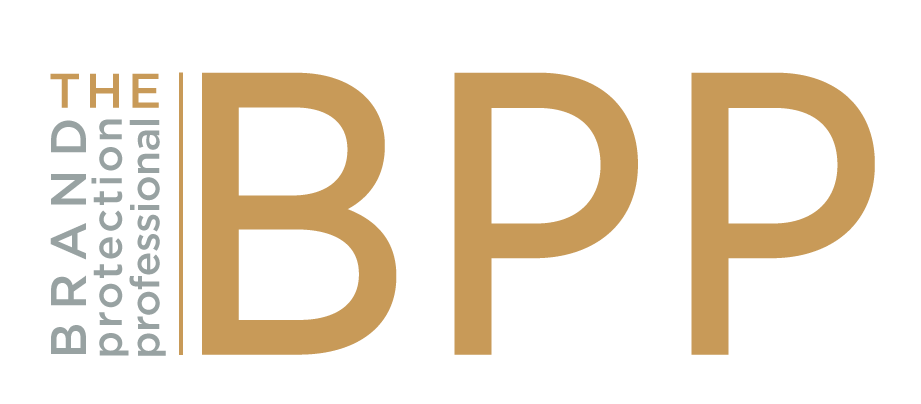Andrew Love
Brand Protection/Investigations, Specialized Bicycles, ,
Tom Nichols
Supervisor, Global Brand Protection Investigations
GM Global Security, General Motors

Tom, the day I first saw fake helmets on eBay, I just about fell out of my chair. What was your initial reaction when you first identified fake airbags? (See IPEC U.S. Joint Strategic Plan on IP 2017-2019, pgs 38 and 78)

Like you, initially I was surprised an item like an airbag would be faked. Since then, The Automotive Anti-Counterfeiting Council (A2C2), which is a collaborative membership of 12 automotive OEMs working together to combat counterfeiting of automotive parts and accessories, has really come together around the issue of removing fake airbags from the market. We’ve had a lot of success in taking on this fight by earning the help of law enforcement, prosecutors and e-commerce platforms. Our work is cut out for us, but we are seeing the fruits of our labor.
Where are fake Specialized Bicycles parts sold most frequently? Online or in retail shops?

It’s almost all online, Aliexpress, Facebook, Instagram, etc. Almost never legit shops with a storefront. It’s the people on the outside of the legitimate cycling industry who want in. Those are the ones drawn to the counterfeit supply networks.
I actively struggle with how we communicate to our customers. What is the best way? You want to inform, but also don’t want to scare people. For a long time, we engaged the cycling media through Bicycling Magazine, VeloNews, etc., rather than telling the story ourselves. How does GM frame this issue internally, and how does it translate externally?

It can be a challenge to determine what to say to consumers and how to say it. We talk on our ACDelco.com website about the dangers of fakes, how to spot counterfeits and what to do if a customer thinks they bought a fake. ACDelco is a GM-owned brand and provider of original equipment and replacement parts, and our website offers a public awareness campaign to assist customers. For instance, they can email our brand protection team directly to address concerns regarding counterfeit products.

(Clicking–) yeah, https://www.acdelco.com/counterfeit-auto-parts.html is nice. We are working on something very similar. I’ve read research on how Nike is engaging its customer base as “brand evangelists” to report fakes. That has a lot of appeal to Specialized.

Interesting. What have you learned from Nike’s customer engagement?

Well first of all, for years I’ve had some passionate Specialized fans feeding me leads. In fact I just hired one of them to do contract work. I’m now interested in taking this larger scale. What Nike seems to be doing in allowing and therefore encouraging serious customer interaction vs. fakes through NikeTalk forums. Over 3,600+ posts so far.
When do you know it’s time to escalate? Is there a different metric for the public safety items, vs. the purely economic issues of just, oh, say T-shirts with your logos on it?

When public safety items are faked, we look to engage law enforcement for assistance to remove the products from the market and confront counterfeiters. It’s challenging because of the sheer volume of counterfeiters across the globe and limited resources available to brands and law enforcement, but it’s important work. At the same time, you can’t forget about those ripping off your T-shirts or logos because you must send them a message that we won’t stand for it.

Well said! Brand abuse comes in all sorts of threat levels. So here is something I am curious about: what do you find the greatest challenge is in hunting fake auto parts in the aftermarket retail network? It’s not a problem I face.

A big challenge is tracking counterfeits upstream to find and remove the source of the fakes. You have to get buy-in from investigative companies and governments many times, and the resources aren’t always there.

Brand Protection often must justify its existence within a company. I know for Specialized, the internal discussions are often very complex. I am fortunate that the founder/CEO gets it, views counterfeits as a personal attack on his life’s work. How is the discussion framed within GM?

At GM, it’s a team effort. So we involve our teams in Sales, Legal, Logistics and Investigations to not only fight counterfeits but highlight the accomplishments. We track our successes in terms of the costs of fake products we remove from the market each month, the Customs detentions made, cease and desist letters written and raid actions taken. The metrics really tell a successful story at the highest levels of leadership.

Agreed fully on all those metrics! In many ways, I’ve found the “youth” of our profession a blessing. We constantly need to chart and re-describe what we do, so internal stakeholders understand.

I know a big question for brand owners lately is how do we correlate any gains in future sales because of the counterfeit recoveries we’ve made in the recent past. Does Specialized have a unique approach to this question?

Counterfeits compete directly with new bike and helmet sales. So our retailer network seems quite responsive to what is out there. How often I get complaints is a good measure of what is going on. I’ve had a couple of opportunities to speak to bike shop owners in large groups around the country. It’s always interesting to see a direct show of hands on who has seen fakes roll into their shop.
When your research team creates a good-looking case, what is your preferred avenue of submitting it? I often use the NCFTA (See Leveraging Consumer Feedback, BPP 2nd Edition). Sometimes I submit directly to the National IPR center (See How to Be a Good Victim, BPP 1st Edition), or officers I’ve worked with.

We have a great relationship with Homeland Security Investigations and can call them directly to refer a case. We try to nominate cases when parts with a safety nexus – like airbags, diagnostic tools or brake pads – are faked. And we try to present the case with as much information as possible, like any history of past infringement, actions we may have taken against them and the extent of the counterfeit operation.

They fake diagnostic tools??!?!?!

Yes. And we consider it a safety item because a fake tool may not be able to properly diagnose a customer’s maintenance issue.

Everything I see is small-parcel air. Everything. I imagine you might be fighting a blend of that and container shipments.

In our experience, it’s small-parcel shipments as well. How do you confront the challenge of so many products coming into the U.S. in so many shipments across so many ports?

Small parcel air is such a blizzard of items, it often doesn’t feel like a good bang for my buck of investment. So, my attack vector has changed. These days I am spending my finite time attacking the money supply of the counterfeit sellers. Customs seems spotty in terms of return. Taking counterfeiters’ money hurts them and disrupts in-process transactions. We have had a lot of success with that.

Law enforcement suggests going after the money behind the operation as well. Not always easy though.

Tom, thanks for the chat, I look forward to seeing you “on the road”. Assume the next friendly wave you get from a cyclist is me.

Thanks Andrew!
THE BRAND PROTECTION PROFESSIONAL | MARCH 2017 | VOLUME 2 NUMBER 1
COPYRIGHT 2017 MICHIGAN STATE UNIVERSITY BOARD OF TRUSTEES
